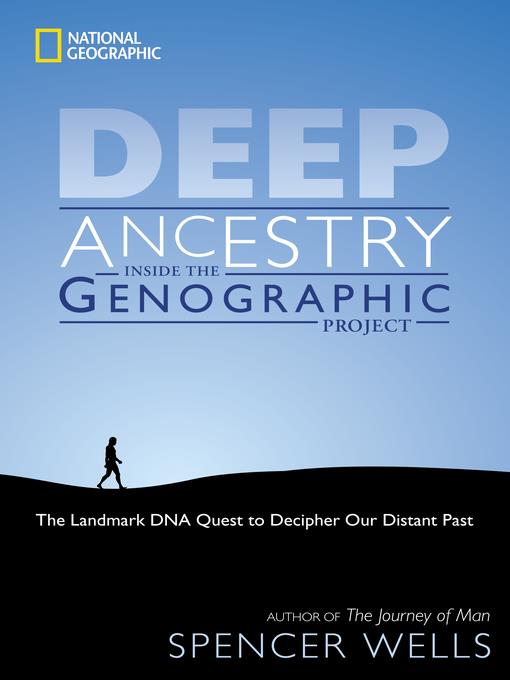
Deep Ancestry
The Landmark DNA Quest to Decipher Our Distant Past
کتاب های مرتبط
- اطلاعات
- نقد و بررسی
- دیدگاه کاربران
نقد و بررسی

November 20, 2006
In this concise and well-written work, Wells (The Journey of Man) provides an accessible introduction to genetic anthropology, the study of human history using genetic evidence. Wells is the director of the Genographic Project, which collects DNA samples from a wide array of world populations to better understand human history over the last 200,000 years. Wells does a fantastic job distilling both genetics and genetic anthropology into straightforward topics, presenting sophisticated material accessibly without oversimplification. He gives the reader the basic concepts (Y chromosomes, mtDNA, haplogroups, genetic markers) and then proceeds to step through genographic research from its 19th-century origins to the present day. In so doing, he takes the reader back to the 170,000-year-old female genetic ancestor of every person alive today: the so-called African Eve. It is a remarkable journey that will appeal to readers of all backgrounds interested in exploring the science and research behind human evolution, although those with more experience in the sciences may find some of the material elementary.

December 1, 2006
The Genographic Project is an ambitious five-year effort to map humanity's evolutionary journey from our common African origins through the study of genetic markers. Project director and geneticist Wells ("The Journey of Man") uses case studies of five individuals to illustrate what can be learned from population genetics. He also provides accessible introductions to evolving, cutting-edge scientific concepts like haplogroups, mitochondrial DNA, Y chromosomes, and genetic drift. As Wells explains, the Genographic Project offers ordinary citizens the chance to participate and contribute DNA for analysis for $99.95, an exchange that includes a DVD, a cheek-swab kit, and a confidential Genographic Project ID number to retrieve results. The people behind this project seem to have learned from previous studies, which were criticized as racist. What won't be learned from these genetic analyses (traits linked to diseases) is pretty straightforward, as explained by Wells. They deliberately leave out any analysis of disease traits, medical applications, and other potentially commercial applications. We certainly have much to learn yet about populations, and this book may help. Recommended for libraries with collections in popular science. (Illustrations not seen.)Mary Chitty, Cambridge Healthtech, Needham, MA
Copyright 2006 Library Journal, LLC Used with permission.

November 1, 2006
The study of human prehistory has been revolutionized by genetic evidence. Here a leading researcher in genetic anthropology surveys the specialty. He warns that its promise could go unrealized because contemporary mobility is reshuffling the human genome, obscuring the DNA details by which experts can trace the geographic ancestry of contemporary ethnic groups. To rescue genetic information, Wells heads National Geographic Society's Genographic Project, which collects and analyzes DNA from volunteers to create a database of the human genome as it was before the Industrial Revolution. He relays the personal stories and ethnic lineage of five such volunteers while explaining both the DNA markers and the logic by which he and his colleagues can reliably place and date a person's ancestry. Even at this early stage, genomic discoveries about ancient migrations are astounding, and the potential of the NGS project to continue them is apparent from the open questions Wells poses in his epilogue. An informative and exciting picture of science in the making.(Reprinted with permission of Booklist, copyright 2006, American Library Association.)

























دیدگاه کاربران